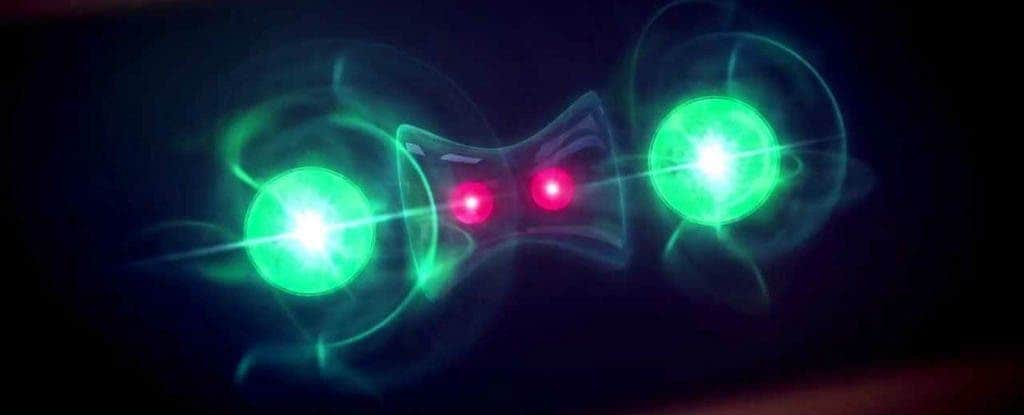Physicists in China just broke a new record by achieving quantum entanglement with 18 qubits, surpassing the previous record of 10. This significant breakthrough puts us one big step closer to realizing large-scale quantum computing.

It’s hard to find a stranger, more exotic phenomenon than quantum entanglement — the idea that two entangled particles, or qubits, can influence each other’s state instantly even when they’re light-years apart.
Even if you separate entangled particles by billions of miles, changing one particle will induce a change in the other. This information appears to be transmitted instantaneously, with no violation of the classical speed of light because there’s no “movement” through space.
When Albert Einstein first spoke about quantum entanglement in 1935, he famously called it “spooky action at a distance.” But although quantum entanglement is still very strange, at least scientists are no longer strangers to it. Physicists have so far shown how quantum entanglement works over various distances both on land and in space. Most recently, a Chinese satellite entangled particles over 1,200 km apart, paving the way for the future’s quantum communication and quantum encryption networks.
Maintaining quantum entanglement is an extremely delicate matter, however, as even the slightest perturbance can induce decoherence — the destruction fo the quantum states.
In a new record, Pan Jianwei and colleagues at the University of Science and Technology of China, eastern China’s Anhui Province, demonstrated a stable 18-qubit state. The previous record of 10 qubits was set by the same team. The breakthrough was made possible by simultaneously manipulating the freedom-paths, polarization, and orbital angular momentum of six photons.
“The speed of quantum computing grows exponentially as the number of qubits in an entangled state increases … the achievement of an 18-qubit entanglement this time has set the world record for largest entanglement state in all physical systems,” Wang Xilin, a member of Pan’s team told Global Times.
“With that goal, the team’s next step will be to realize a 50-qubit entanglement and manipulation,” he added.
Full control over the number of entangled particles is fundamental to quantum information processing that enables quantum computers to do their magic.
In normal silicon computer chips embedded into your laptop or smartphone, information is rendered in one of two states: 0 or 1. In a quantum computer, information can also be stored and relayed in both states at once, holding exponentially more information. As an analogy, imagine being able to read a whole library at once rather than one book at a time.
By one estimate, a quantum computer with 50 quantum bits would be more powerful in solving quantum sampling problems than today’s fastest supercomputer. Quantum computers are able to crunch through big data problems that involve finding optimum solutions from vast numbers of options, which is extremely important for a number of medical fields (i.e. protein folding, gene sequencing) and climate research. One of the biggest selling points of quantum computers, however, is security. A hacker can make a copy of your email now without you ever knowing; a hack of a quantum system, however, is bound by the laws of physics to leave traces.
So, how long before quantum computers become a reality? Efforts such as those of Jinwei and colleagues demonstrate that we’re coming closer to shifting the paradigm in computing — and they are not alone. According to McKinsey & Company, in 2015, there were about 7,000 researchers worldwide working in the field, with about US$1.5 billion a year being spent. Today, there are certainly more resources invested into quantum computing research as governments and corporations chase the advantages of quantum technology.



